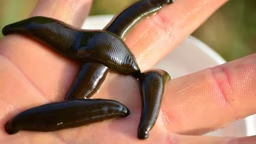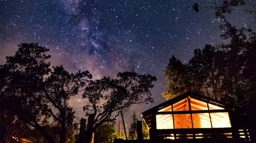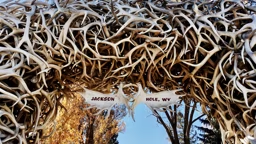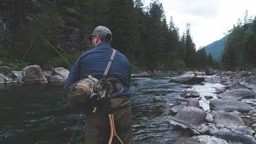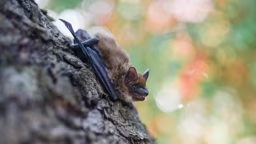All cameras help us capture special wildlife memories. Whether you use a point-and-shoot or a complicated digital single-lens-reflex (DSLR) camera, the challenges for capturing these images are similar. If you’ve spent time photographing wildlife, you know the difficulty of getting close enough for good images. Whether it’s an insect in the garden, a bird at the feeder, or a red fox in the cabin yard, getting the subject to fill the frame may be a photographer’s greatest challenge. Here are some practical tips and techniques to bring you closer to wildlife, and to bring wildlife closer to you.
Zoom in to wildlife
For top-quality images, a DSLR camera is difficult to beat. But if expense and size are a factor, consider a point-and-shoot. Both camera types can be purchased with a zoom lens. Zoom lenses offer the flexibility of varying perspectives without changing lenses. Larger zoom lenses work best for wildlife. From insects to moose, zoom close for greater impact.
Zoom in to wildlife
For top-quality images, a DSLR camera is difficult to beat. But if expense and size are a factor, consider a point-and-shoot. Both camera types can be purchased with a zoom lens. Zoom lenses offer the flexibility of varying perspectives without changing lenses. Larger zoom lenses work best for wildlife. From insects to moose, zoom close for greater impact.
Photograph during the best light
To capture saturated colors, photograph early in the morning and late in the afternoon. Don’t avoid overcast days; cloudy conditions often produce better images than the harsh light of a sunny day.
Get close with a photo blind
To peek into the private lives of animals, use a photo blind. There are a wide variety of hunting blinds available that work great for wildlife photography. Wildlife movements through your property show obvious paths. Carefully selecting the blind’s location, coupled with plenty of patience, can yield excellent photos.
To capture saturated colors, photograph early in the morning and late in the afternoon. Don’t avoid overcast days; cloudy conditions often produce better images than the harsh light of a sunny day.
Get close with a photo blind
To peek into the private lives of animals, use a photo blind. There are a wide variety of hunting blinds available that work great for wildlife photography. Wildlife movements through your property show obvious paths. Carefully selecting the blind’s location, coupled with plenty of patience, can yield excellent photos.
Develop a sanctuary to entice wildlife
Landscape around your cabin by thinking “habitat.” Plant trees, bushes and flowers that provide fruits, berries, seeds and nectar. Provide water with a bird bath or pond. Photographing at a screech-owl box, wren house or bluebird box can offer hours of fun.
Bring wildlife to your cabin windows
Consider putting bird feeders or bird baths outside your cabin windows at the proper distance for photography, and provide an assortment of seeds to attract a variety of birds. During winter, a bird-bath heater will keep water from freezing. In summer, hang a hummingbird feeder on the porch or close to a window (dissolve one part sugar in four parts water to make artificial nectar). Decals or clings on window panes can help birds see the glass and avoid collisions.
Approaching wildlife on land
When you spot wildlife, try not to alarm the creatures by getting excited or pointing. Talk quietly and move slowly. Never move directly toward an animal; instead, approach at an angle. When the animal looks at you, remain motionless until normal behavior returns. Don’t approach large predators or animals that behave strangely or act sickly.
Landscape around your cabin by thinking “habitat.” Plant trees, bushes and flowers that provide fruits, berries, seeds and nectar. Provide water with a bird bath or pond. Photographing at a screech-owl box, wren house or bluebird box can offer hours of fun.
Bring wildlife to your cabin windows
Consider putting bird feeders or bird baths outside your cabin windows at the proper distance for photography, and provide an assortment of seeds to attract a variety of birds. During winter, a bird-bath heater will keep water from freezing. In summer, hang a hummingbird feeder on the porch or close to a window (dissolve one part sugar in four parts water to make artificial nectar). Decals or clings on window panes can help birds see the glass and avoid collisions.
Approaching wildlife on land
When you spot wildlife, try not to alarm the creatures by getting excited or pointing. Talk quietly and move slowly. Never move directly toward an animal; instead, approach at an angle. When the animal looks at you, remain motionless until normal behavior returns. Don’t approach large predators or animals that behave strangely or act sickly.
Approaching wildlife by water
A quiet approach will provide the best opportunity for photographing wildlife from the water. Canoes and kayaks are often tolerated at unusually close range. Electric trolling motors on larger boats can also be quiet enough. Keep your camera ready and focused, and take photos as you close the distance. Don’t approach nesting birds like loons and grebes. Observe them from a distance; don’t get so close that they leave their nests.
Edit your way to better photography
In wildlife photography, expect a large number of poor images. Animals are constantly moving. Photos that are poorly composed or out of focus should be deleted. Edit carefully, share only your best, and others will appreciate your cabin wildlife encounters.
Bob Gress has been attracting and photographing wildlife in his yard for 30 years. All of his neighbors tell him of their wildlife sightings and blame him for their wildlife problems.
A quiet approach will provide the best opportunity for photographing wildlife from the water. Canoes and kayaks are often tolerated at unusually close range. Electric trolling motors on larger boats can also be quiet enough. Keep your camera ready and focused, and take photos as you close the distance. Don’t approach nesting birds like loons and grebes. Observe them from a distance; don’t get so close that they leave their nests.
Edit your way to better photography
In wildlife photography, expect a large number of poor images. Animals are constantly moving. Photos that are poorly composed or out of focus should be deleted. Edit carefully, share only your best, and others will appreciate your cabin wildlife encounters.
Bob Gress has been attracting and photographing wildlife in his yard for 30 years. All of his neighbors tell him of their wildlife sightings and blame him for their wildlife problems.
To see more images and tips from Bob Gress, click here.







